I want to use either WS2811 or WS2801 to drive high power LEDs with spacing between LEDs up to 15 meters. These are going to be used outdoors or in a water feature. As you know WS2811 output is constant current but WS2801 output can be constant voltage, I've come up with the following circuit to drive power LEDs constantly at about 350mA (R_load).

simulate this circuit – Schematic created using CircuitLab
I'm no EE, is the circuit ok? any suggestions to make it better?
Considering the distance between LED's will it work if I use 74hc125 buffer IC to "power up" the data signals of WS2811 (or WS2801) ICs?
WS2801 uses SPI but WS2811 uses I2C, which one is better for my case?

